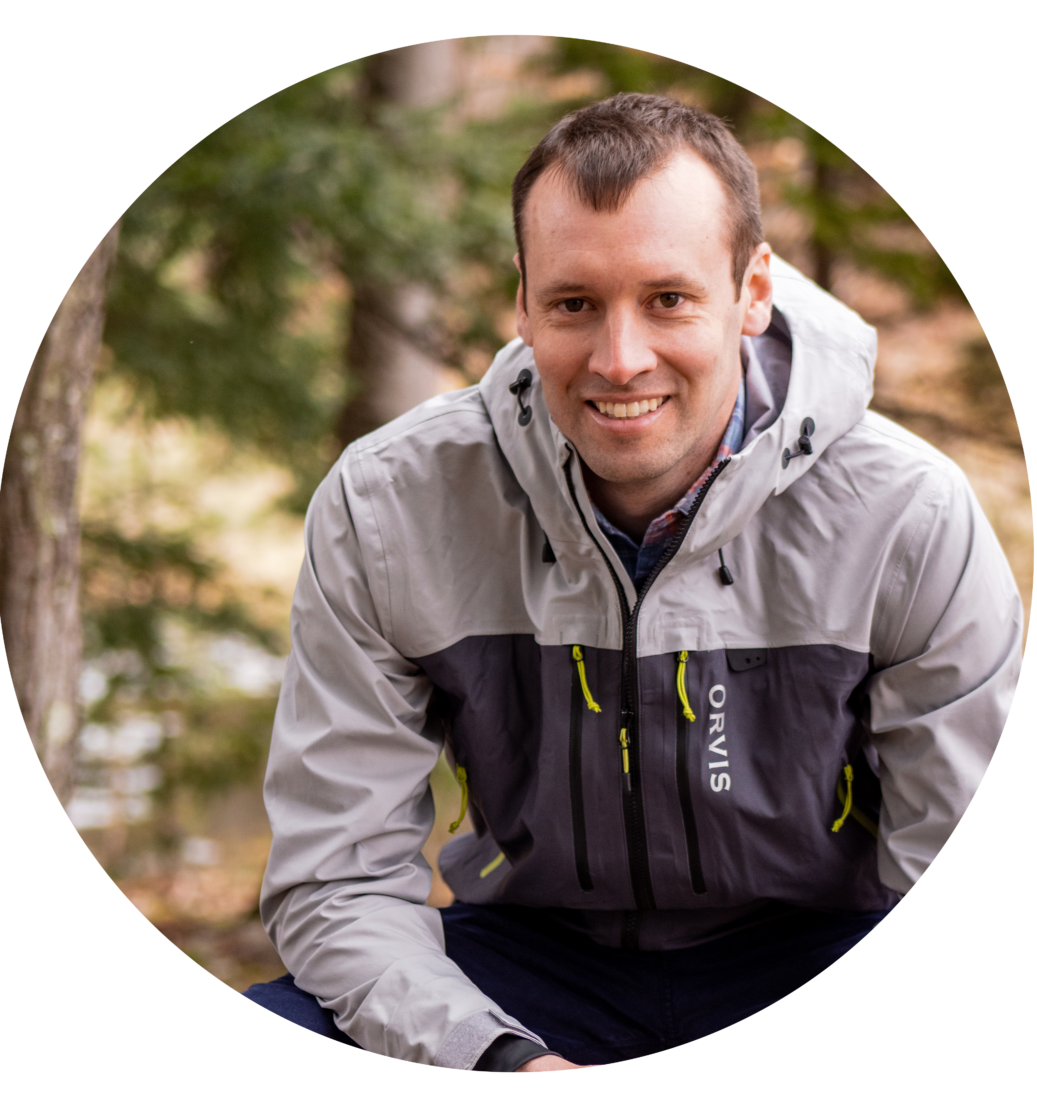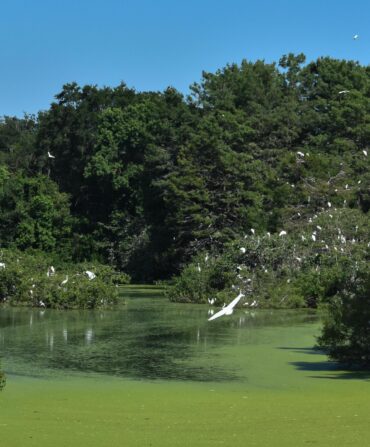
On a bright mid-June morning, Simon Perkins stands on the rock-strewn shore of a pretty little trout stream in southern Vermont, putting the finishing touches on his fly rig—a Stimulator dry fly with a tiny nymph dropped off its hook. In what appears to be one continuous and effortless motion, he nips off the tip of the tag end of his tippet with his teeth, sweeps his rod into a back cast, and then brings the line forward and lands his brace of flies in a pocket of water the size of a Thanksgiving turkey platter. Two seconds later, a 10-inch brook trout—a large fish for this stream—devours the Stimulator. Perkins brings the trout to hand, briefly admires the brilliance of its red, blue, and green flanks, and lets it go. Then he hops across a few rocks, flings a few casts into another pocket and, eventually, hooks another brookie. The 37-year-old makes his way upstream in this manner for another hour or so until he has to head back to work—as the new president of the Orvis Company.
Perkins’ grandfather, Leigh, had purchased Orvis in 1965 from Duckie Corkran, who bought the company from its founder, Charles F. Orvis, in 1939. (Leigh was also 37 years old at the time.) In 1992, Perkins’ father, Perk, took the reigns at age 39, running the company until 2017. The company was then led by a non-family member, Bill McLaughlin, until this May, when Perkins officially became the president, pulling off a rare feat in this day and age, when only some 10 percent of family-run companies make it to the third generation, according to the Harvard Business Review.
While studying at Middlebury College, Perkins spent his summers working as a trout guide in Montana. After graduating, he added upland birds to his guiding mix, in a career that lasted for eleven years. He officially joined Orvis in 2012 in the e-commerce department and worked his way up through the trips, merchandising, and brand departments to the role of the chief operating officer, a position he held for two years prior to taking over the company. We caught up with Perkins—on the stream and off—to talk a bit about his background, Orvis’ efforts to get more people of different backgrounds involved in outdoor sports, and the company’s ties to the South.
Guiding for trout and upland birds for eleven years has some obvious resonance when it comes to leading a sporting company like Orvis. But were there other things you learned from the experience that you think will help you in your new role?
I admit that when I started guiding, I did it for selfish reasons. I needed that outdoor office. But I think I was taught some very valuable lessons along the way. I learned about empathy. As a guide, you spend hours in a driftboat or walking rolling hills with people, and you see the value in being curious and thoughtful and having a genuine interest in connecting with them. Guiding is really about understanding what’s most meaningful to your clients and trying to create really inspired moments that make a difference in their lives. That clearly translates into what I am trying to do now. I also learned a work ethic. Guiding is sometimes seen as an aspirational livelihood, but those who’ve done it know it can be a grind. You get educated in not being surprised when things get hard, and in having an optimism and confidence that stems from being willing to apply yourself and being able to adapt and read your clients or the weather or the dogs. Guiding also teaches you how to embrace, respect, and appreciate that a lot is out of your control and that you have to make an unbiased assessment of your surroundings in nature. You see the same thing in the global marketplace and the economy in this business. You have to not be scared about what you can’t control, but instead be inspired.

Speaking of things you can’t control, you took over in the midst of the COVID-19 crisis. How has it affected Orvis?
We’ve found that our customers really started to prioritize things that brought them meaning, especially around the idea of connecting with the outdoors. So we tried to meet their needs. Our fly-fishing sales have been very strong throughout it all, and we focused on connecting and learning and got a huge response. The engagement on our social channels has been up 40 percent over the previous year. Our blog, which is all about how-to and education, has seen a 30 percent increase in visitors. Tom Rosenbauer [the marketing director for Orvis Rod & Tackle] shifted his podcasts to Facebook Live events, and nearly two million people have watched them. During this time, it’s been clear that people crave a connection to the outdoors.
During your career at Orvis, you’ve been very involved in the 50/50 On the Water initiative, which is about gaining gender parity in fly-fishing, and the Breaking Down Barriers Award, which honors an individual who has brought new people to the sport. Is that something you will continue to prioritize?
There’s always been a deep-rooted passion at Orvis for making the outdoor life more accessible to anyone who wants to participate. My grandfather started the fly-fishing schools at our retail stores. We began to offer free “fly-fishing 101” courses under my dad. And we have the free online learning center and how-to videos. We’ve brought in more than 150,000 people to the sport of fly-fishing. So we have this legacy that has continued with 50/50 and the Breaking Down Barriers Award and continues with working on getting more women and people of color involved. We acknowledge that we have some blind spots, so we listen to our customers and our potential customers so we can explore those blind spots and address them, and we will continue to put a huge emphasis on this.

Orvis has long had a firm foothold in the South, with its stores and guides and outfitters. Talk a little bit about your connection to the region.
Well, my brother, Charley [Orvis’ brand marketing manager], and I hopped in the car and drove twenty straight hours to go fishing for tarpon with David Mangum [an Orvis-endorsed guide] in the Panhandle in June. We’ve always had a passion for the South. We fish there every year, and we just had to get there this year. But when it comes to Orvis’ connection with the South, I can’t help but think about the Everglades and the work we are doing there. The advocacy work there represents a big shift for the company. The days of just writing a check are over. The expectations of our customers and employees have changed. We found the right partner in the fight for the Everglades with the Everglades Foundation and went down to Tallahassee and spoke to the state’s leadership and took two full-page ads out in the Miami Herald advocating for the protection of the Everglades. It was really the first time we showed up on an issue like this on an entirely different level, leveraging our credibility and the trust we’ve built over the years. It was a powerful lesson. This is really part of our purpose. We focus on our customers and their experiences, and our employees and their well-being, but you can’t have the customer and employee experiences without the natural resources. And you can’t bring in a bunch of new people into a sport that relies on these resources without being passionate about protecting and conserving them and connecting people with them so they, too, can become stewards and advocates.







